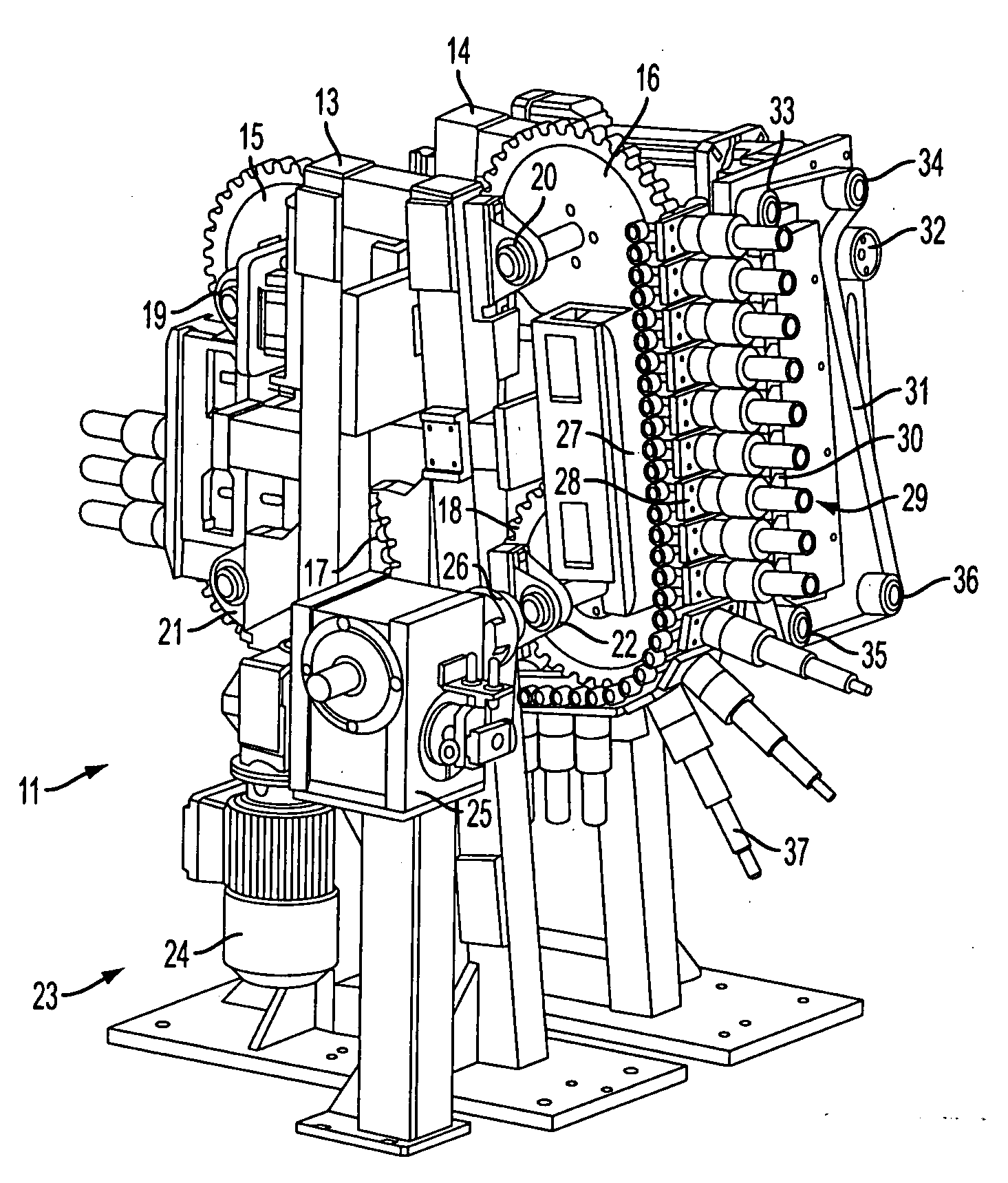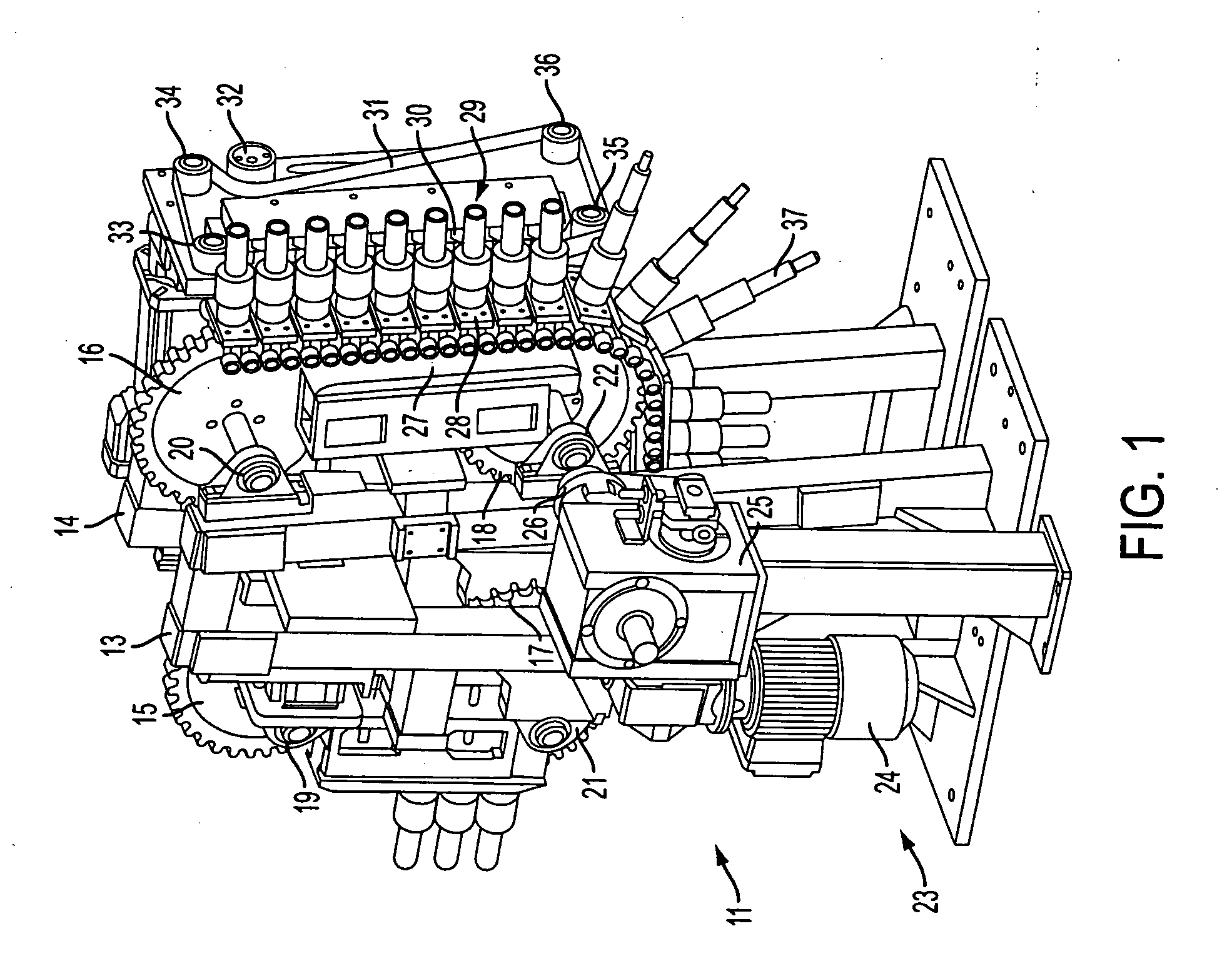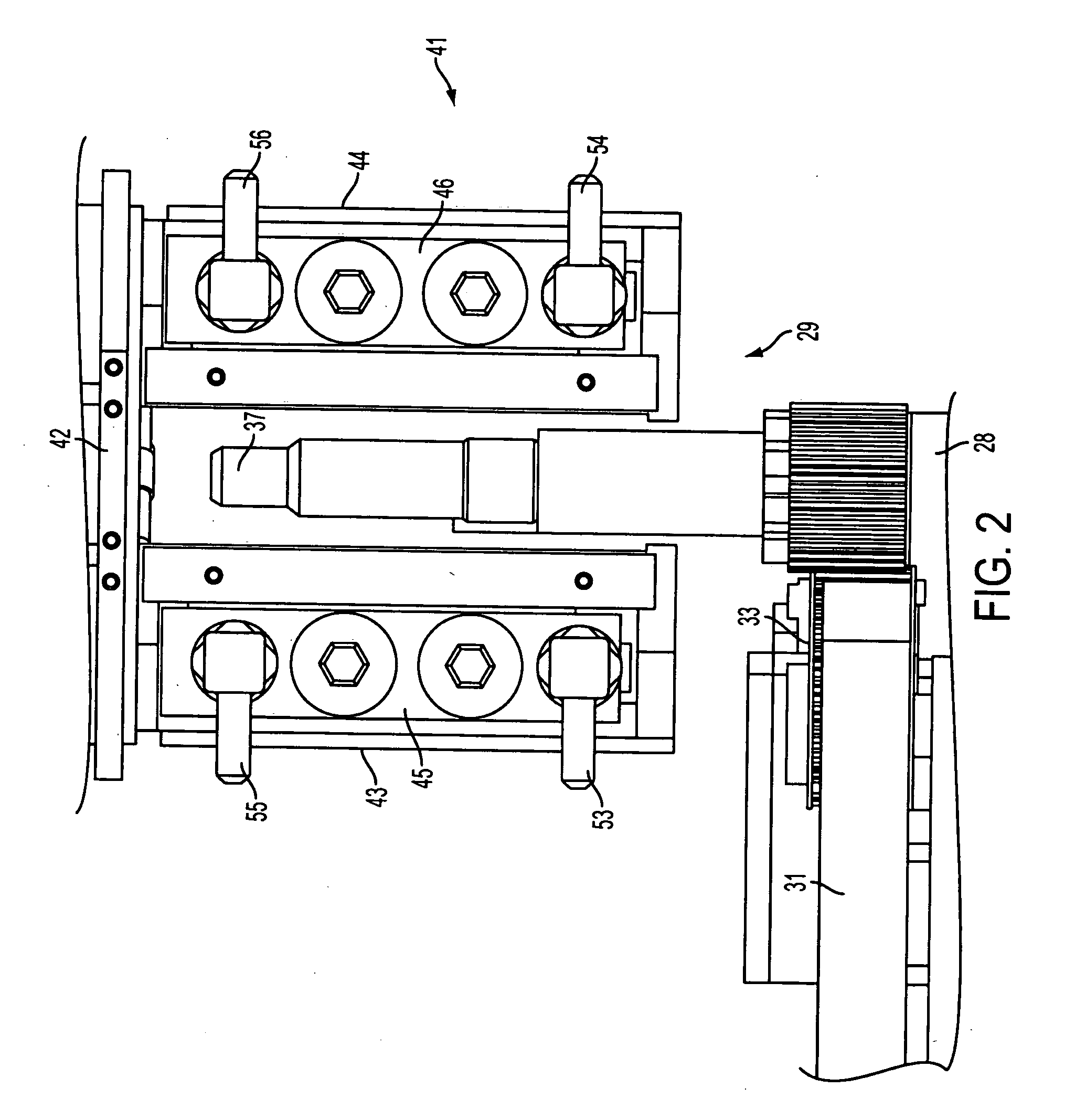Process of and device for induction-hardening helical springs
- Summary
- Abstract
- Description
- Claims
- Application Information
AI Technical Summary
Benefits of technology
Problems solved by technology
Method used
Image
Examples
Embodiment Construction
[0024]FIG. 1 shows a machine frame 11 with two stands 13, 14 between which member belt guiding means are arranged including four chain gears 15, 16, 17, 18. In each case, bearing blocks 19, 20, 21, 22 of the chain gears are provided in the front stand 13. In front of the front stand 13, a drive assembly 23 with a motor 24 is provided. In addition, a transmission 25 is provided whose output shaft, via a clutch 26, acts on the axle of the chain gear 18. Across the four chain gears, an infinite member chain 27 is provided including at least a front vertical part and a lower part deflected into the horizontal plane. The member chain 27 comprises individual chain members 28 in the shape of a rectangular plate on which centrally rotatably supported holding devices 29 are positioned whose axes of rotation are positioned normally relative to the plane of the chain members 28. In addition, it can be appreciated that a suitable rolling contact or friction bearing between a part connected to t...
PUM
| Property | Measurement | Unit |
|---|---|---|
| Temperature | aaaaa | aaaaa |
| Temperature | aaaaa | aaaaa |
| Power | aaaaa | aaaaa |
Abstract
Description
Claims
Application Information
 Login to View More
Login to View More - R&D
- Intellectual Property
- Life Sciences
- Materials
- Tech Scout
- Unparalleled Data Quality
- Higher Quality Content
- 60% Fewer Hallucinations
Browse by: Latest US Patents, China's latest patents, Technical Efficacy Thesaurus, Application Domain, Technology Topic, Popular Technical Reports.
© 2025 PatSnap. All rights reserved.Legal|Privacy policy|Modern Slavery Act Transparency Statement|Sitemap|About US| Contact US: help@patsnap.com



